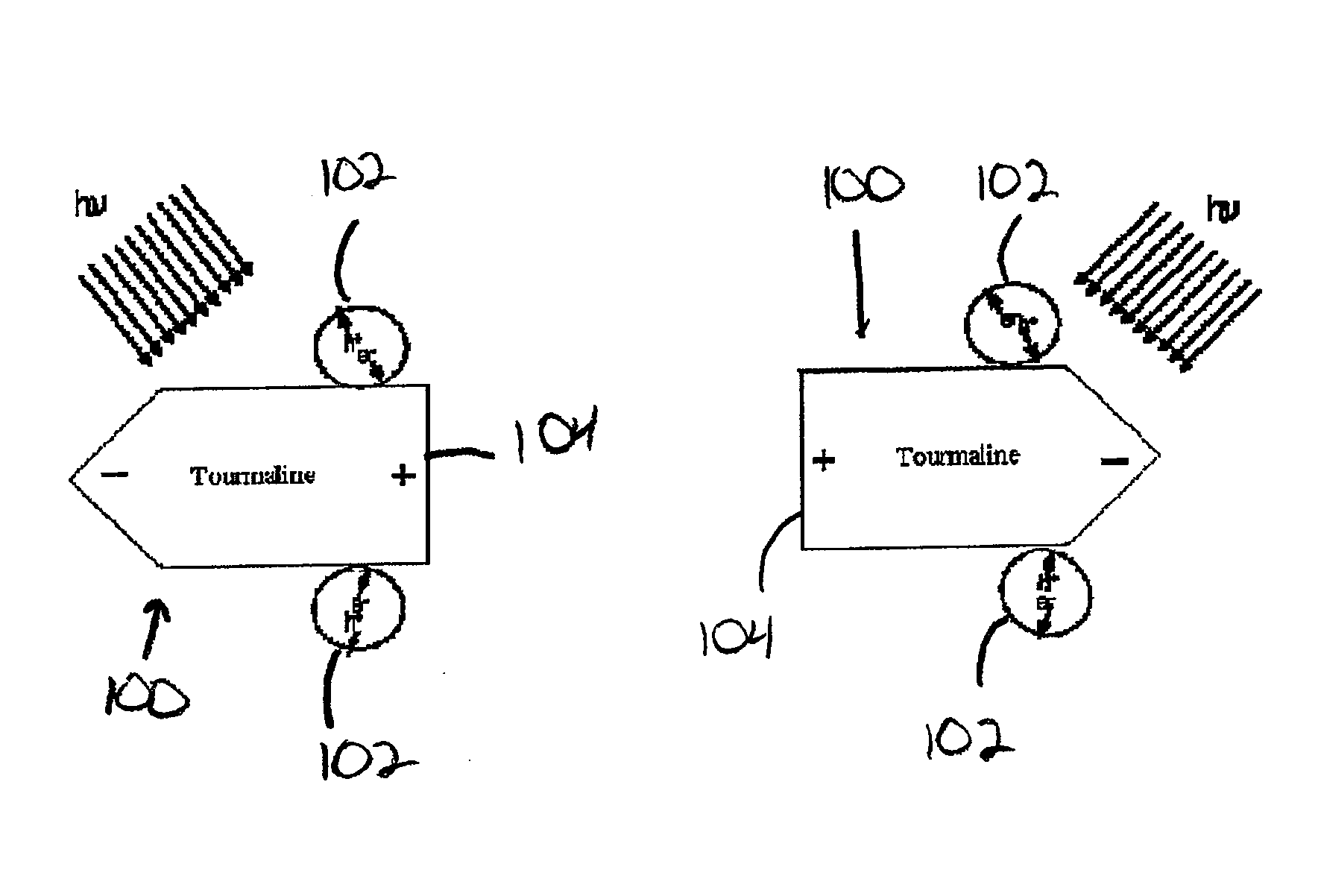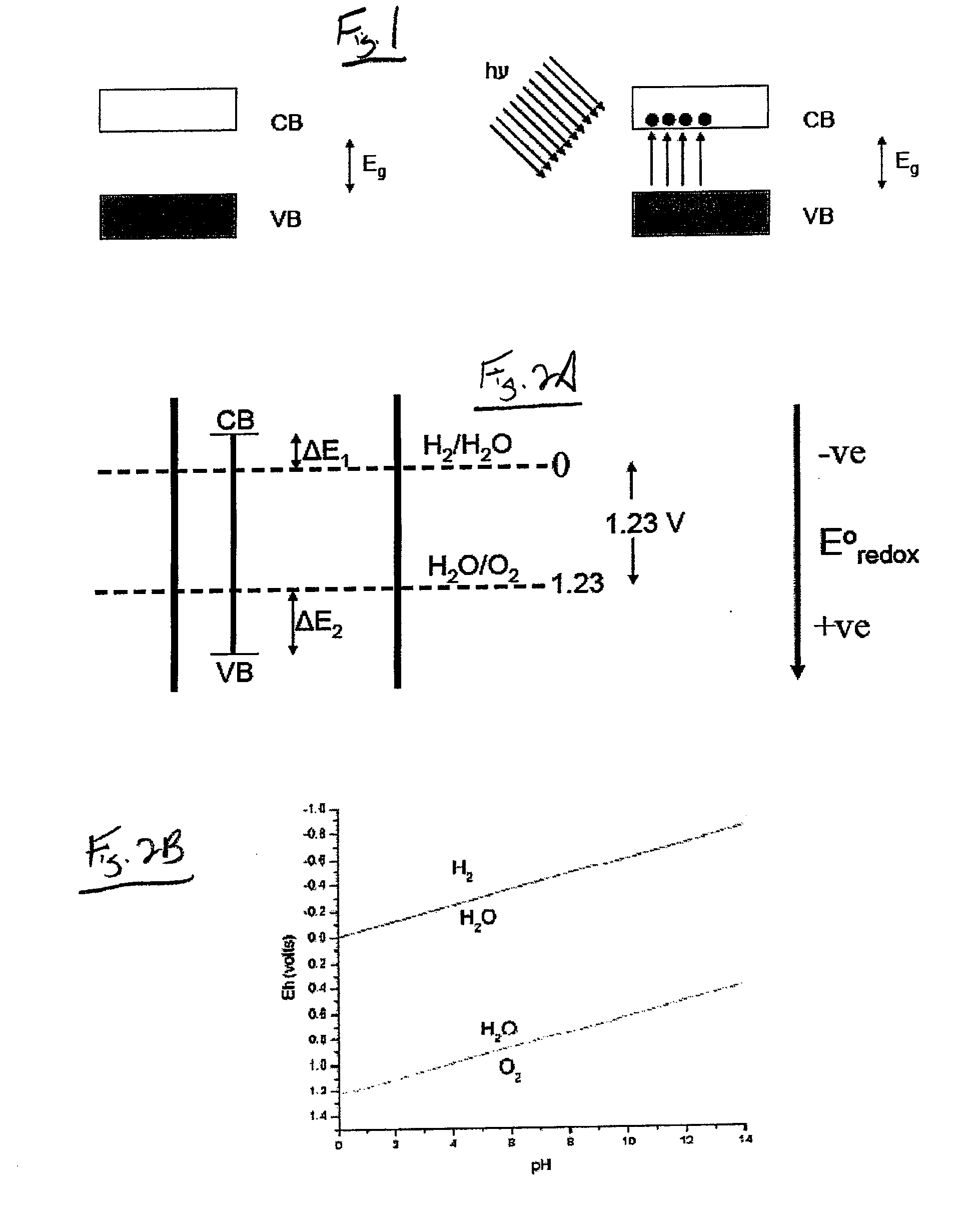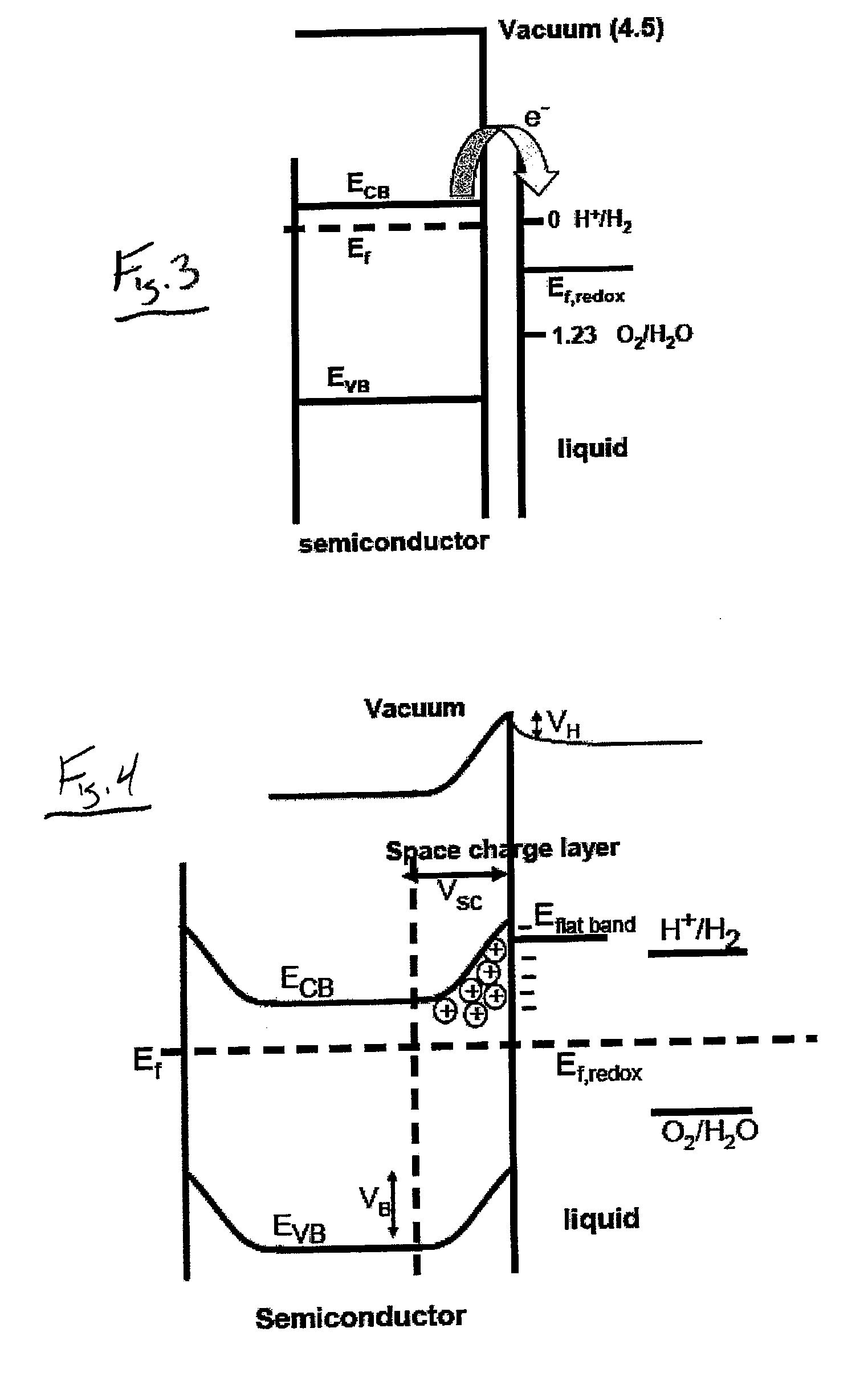Photocatalyst Having Improved Quantum Efficiency and Method for Use in Photocatalytic and Photosynthetic
a photocatalyst and quantum efficiency technology, applied in the field of photocatalysts, can solve the problems that the hydrogen produced through water electrolysis cannot be considered environmentally friendly, the emission of carbon dioxide (cosub>2/sub>), and prior art attempts have not been able to completely remove these problems, so as to increase the quantum efficiency of the semiconductor, enhance the separation of electron hole pairs, and the effect of inherent electrical polarity
- Summary
- Abstract
- Description
- Claims
- Application Information
AI Technical Summary
Benefits of technology
Problems solved by technology
Method used
Image
Examples
Embodiment Construction
[0076]With reference now to the drawing figures in which like reference numerals designate like parts throughout the disclosure, a photocatalyst material formed according to the present invention is indicated generally at 100 in FIG. 9. In a first preferred embodiment of the photocatalyst material 100, the material 100 is formed of a conventional semiconductor material 102 and a mineral material 104.
[0077]The semiconductor material 102 can be selected from any materials having known photocatalytic properties, such as semiconductors, and in particular titanium dioxide. This semiconductor material 102 is combined with the mineral material 104 to form the structure of the photocatalyst 100 using any method or process for integrating the semiconductor material 102 and the mineral material 104 with one another. Suitable processes include, but are not limited to, simply mixing the two materials 102, 104 with one another, or by a sol-gel synthesis to produce a photocatalyst 100 having a co...
PUM
| Property | Measurement | Unit |
|---|---|---|
| Composition | aaaaa | aaaaa |
| Polarity | aaaaa | aaaaa |
| Photocatalytic properties | aaaaa | aaaaa |
Abstract
Description
Claims
Application Information
 Login to View More
Login to View More - R&D
- Intellectual Property
- Life Sciences
- Materials
- Tech Scout
- Unparalleled Data Quality
- Higher Quality Content
- 60% Fewer Hallucinations
Browse by: Latest US Patents, China's latest patents, Technical Efficacy Thesaurus, Application Domain, Technology Topic, Popular Technical Reports.
© 2025 PatSnap. All rights reserved.Legal|Privacy policy|Modern Slavery Act Transparency Statement|Sitemap|About US| Contact US: help@patsnap.com



